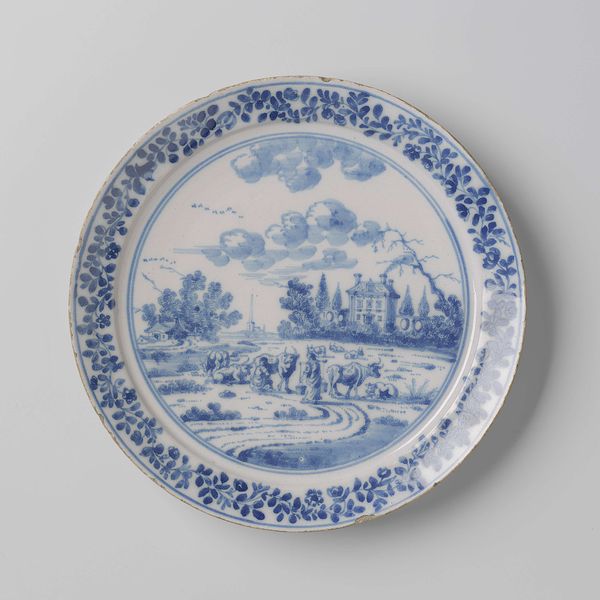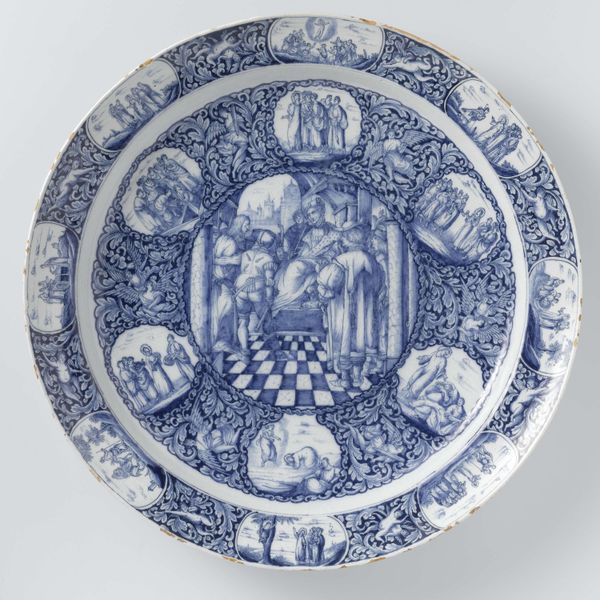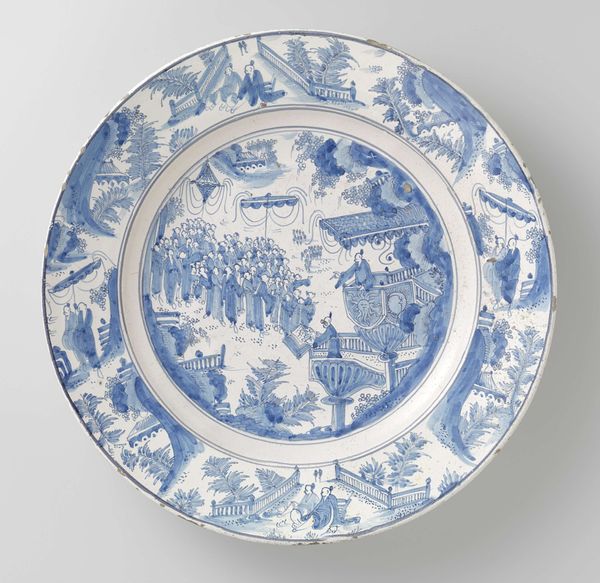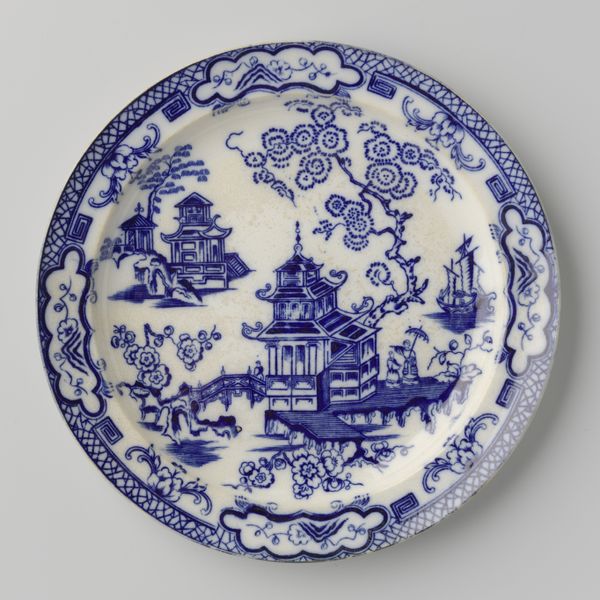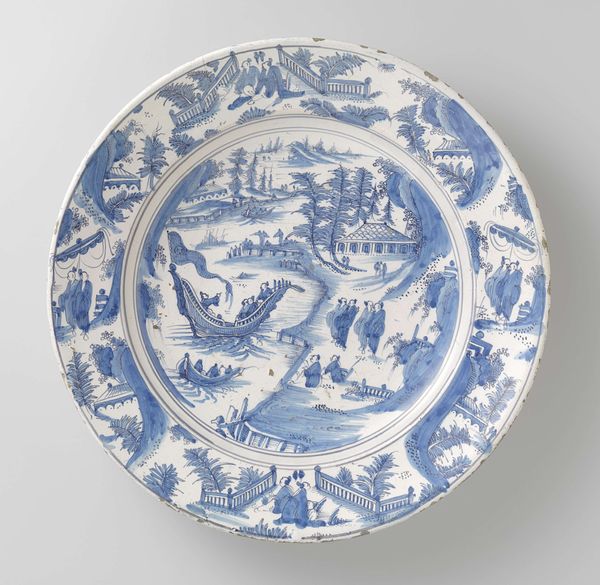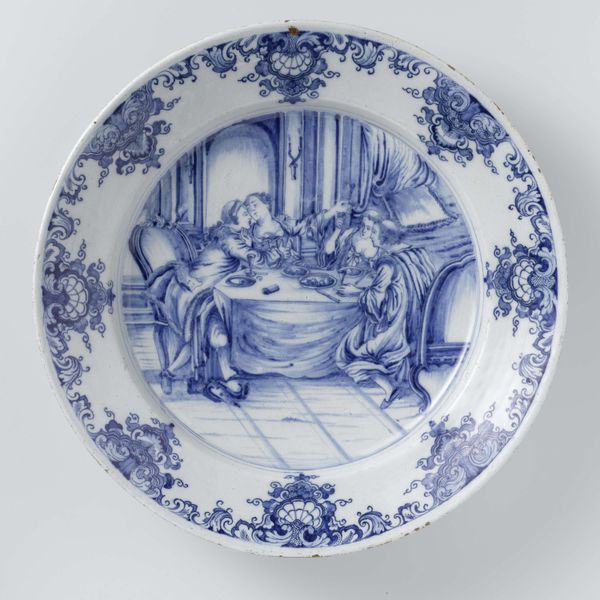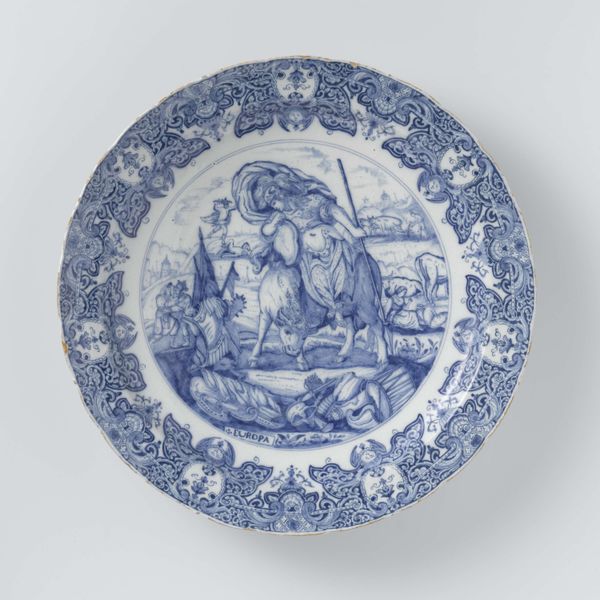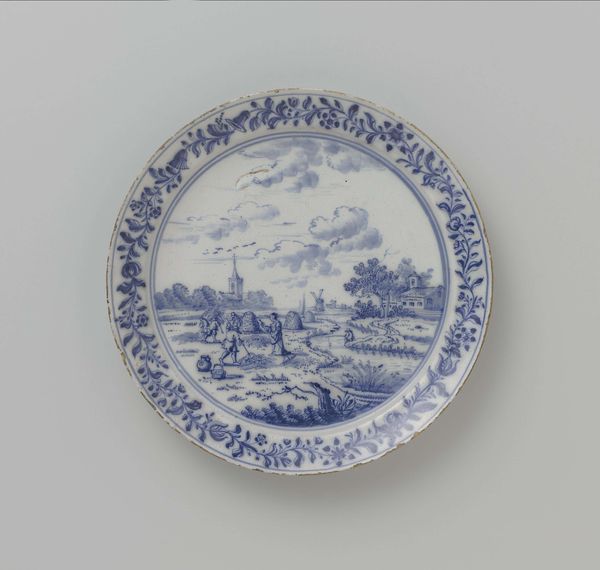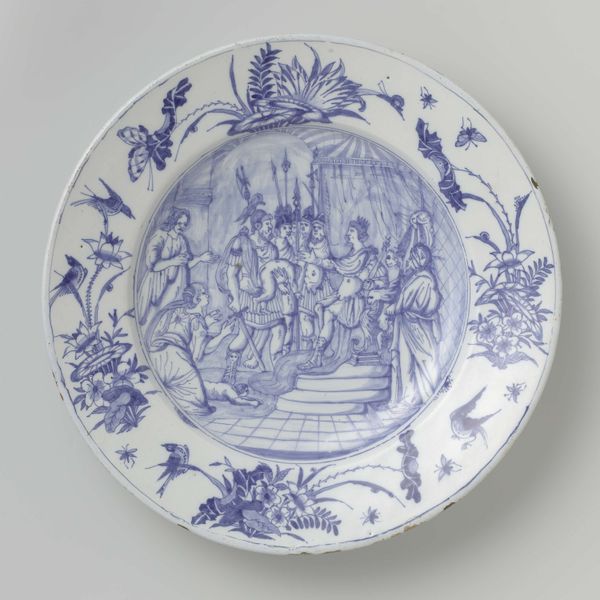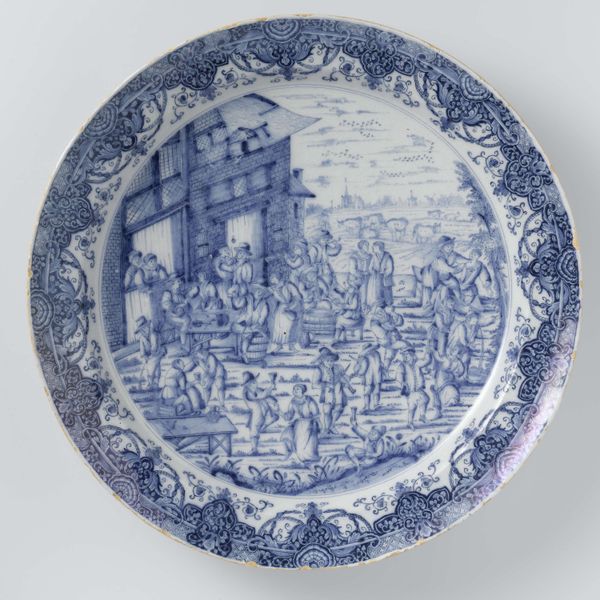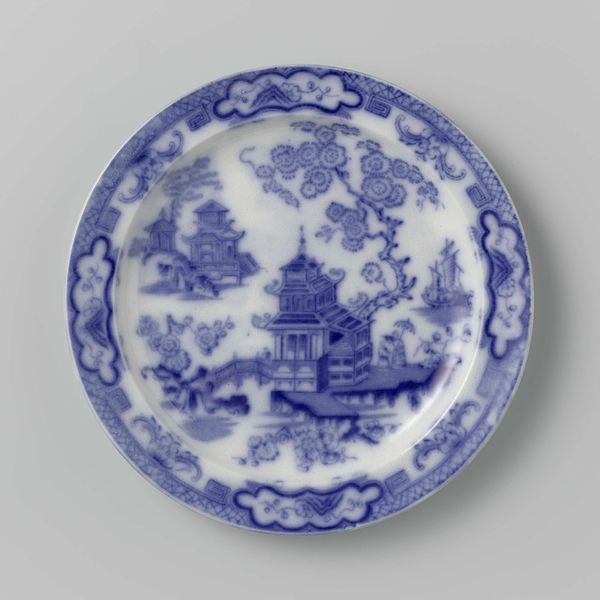
ceramic, earthenware
#
dutch-golden-age
#
ceramic
#
figuration
#
earthenware
#
stoneware
#
ceramic
#
earthenware
#
genre-painting
#
history-painting
Dimensions: diameter 40 cm, height 6 cm
Copyright: Rijks Museum: Open Domain
Curator: This earthenware plate, created by Johannes Verhagen in 1728, depicts the construction of the Temple in Jerusalem. The blue and white palette is instantly recognizable. Editor: Yes, a striking, yet somewhat melancholic piece, I'd say. The monochrome scheme evokes a certain austere beauty. What about the function of pieces like these, do we know? Curator: These weren't just for show! Everyday objects can convey sophisticated meanings. Delftware became incredibly popular throughout Europe in the 17th and 18th centuries, representing a shift in consumption towards more accessible, mass-produced ceramics that emulated the highly coveted, though unattainable, Chinese porcelain. Editor: Absolutely. Delftware democratized the table, so to speak. The political implications of replicating Asian aesthetics in Europe are compelling when considering that at that time Dutch colonialism was reaching its peak! This temple imagery then, must have resonated deeply within the context of Dutch trade routes and religious discourse? Curator: It certainly could! The image of the Temple, coupled with genre scenes around the rim, may signal not only historical importance, but contemporary building trade skills of that time. Earthenware as a material would not have the strength for grand buildings but it could make nice dinnerware to remind consumers of trade, religion, and the every-day all in one fell swoop! Editor: It makes you wonder about the artisan who designed this particular piece, and their level of agency in dictating the artwork on the plate. Curator: Good question, authorship in Delftware is complex. Did Johannes Verhagen also mix the slip and fire it? Editor: What's remarkable to me is how Verhagen captured such a monumental event within the confines of a humble earthenware plate. Food for thought indeed! Curator: Absolutely. A reminder that art history can be found in the most unexpected places, from grand museums to your everyday dinner table!
Comments
No comments
Be the first to comment and join the conversation on the ultimate creative platform.

